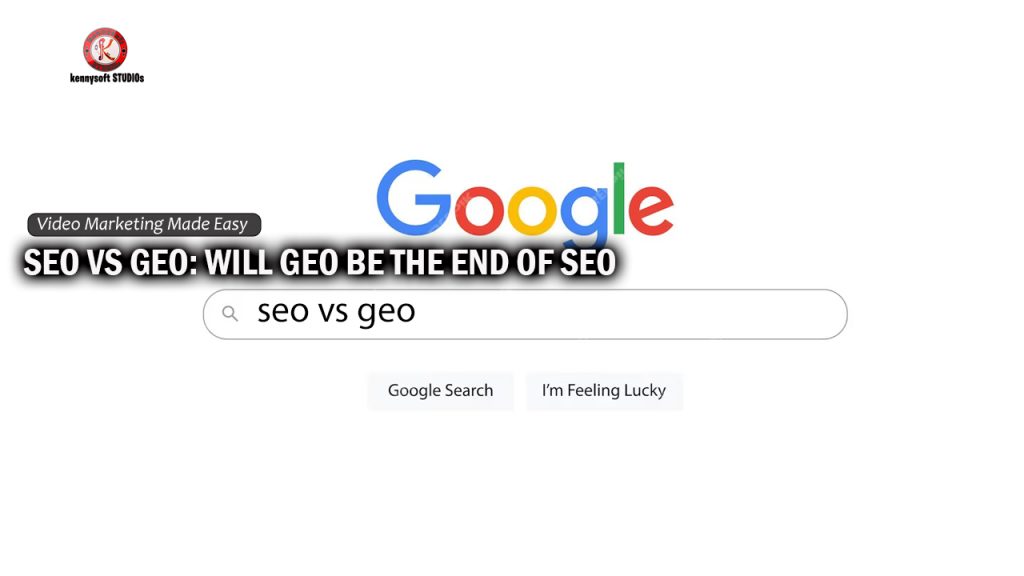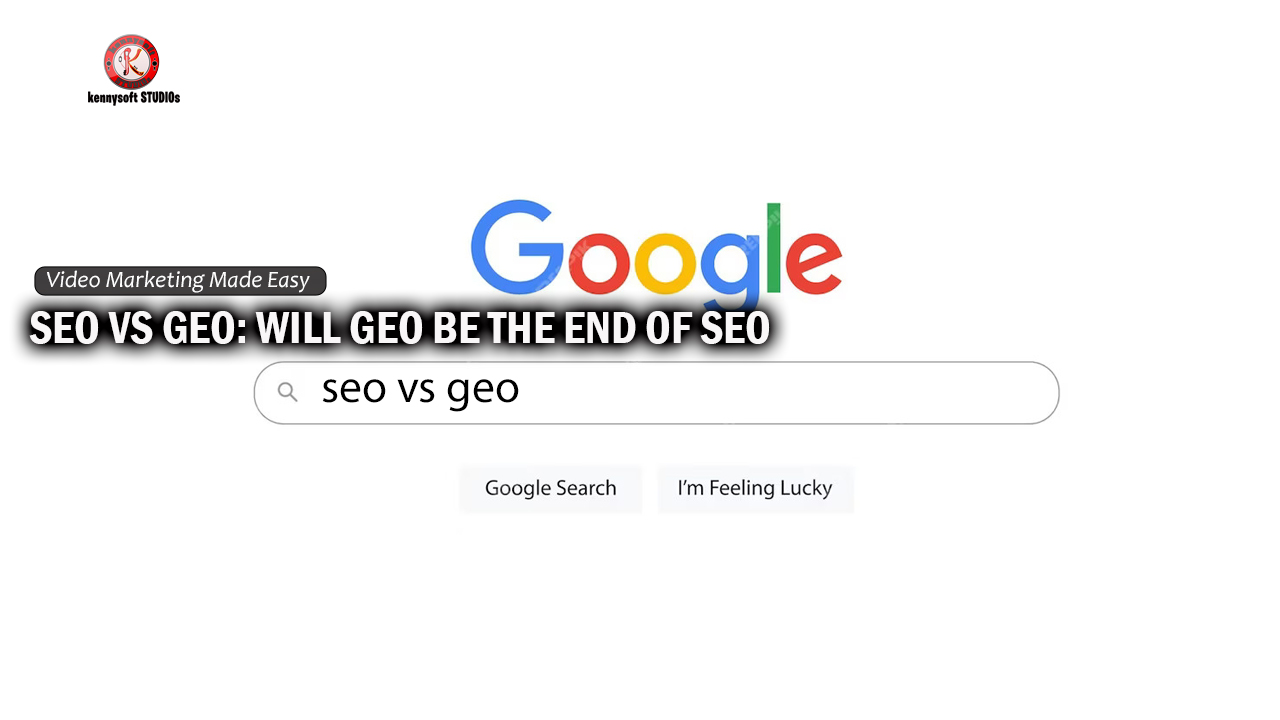
In the dynamic world of digital marketing, staying ahead of the curve means paying attention to trends that redefine the landscape. In recent years, two buzzwords have been gathering momentum in the industry – SEO (Search Engine Optimization) and GEO (Generative Engine Optimization). While traditional SEO has been the backbone of digital presence and audience reach, GEO promises a more personalized approach using geographical data. The question arises – as GEO gains traction, will it spell the end of SEO as we currently know it, or is there a symbiotic relationship waiting to be explored?
This blog post delves into the core principles of both SEO and GEO, explores their potential interplay, and ultimately argues that they represent a synergistic relationship rather than a competition for dominance.
- Seo Vs Geo:
- The Evolution of SEO and Its Critical Role
- Understanding the SEO Ecosystem
- The SEO > ROI Equation
- The SEO > ROI Equation
- Here are some fundamental aspects of SEO:
- The GEO Disruption and Its Geo-Targeted Promise
- Getting Personal with GEO
- The Power of Place: GEO and Physical Spaces
- The Data Dilemma: The Backbone of Both SEO and GEO
- SEO’s Dance with Data
- GEO’s Grit in Data Analysis
- GEO: The Rise of AI-Driven Search Experiences
- Here’s what sets GEO apart:
- The Future Nexus of SEO and GEO
- An Integrated Approach
- The Human Element in Digital Strategy
- A Fusion of SEO and GEO
- Here’s how they can complement each other:
- Moving Forward: Embracing the SEO-GEO Synergy
- Making the Call: Balancing SEO with the GEO Reality
Seo Vs Geo:
The Evolution of SEO and Its Critical Role
SEO has long been the keystone of digital visibility. It involves strategies and practices that help websites rank higher in search engine results pages (SERPs). The overarching goal of SEO is to increase organic (non-paid) traffic to your site by improving the site’s relevance and authority in the eyes of search engines like Google, Bing, and Yahoo.
Understanding the SEO Ecosystem
From on-page optimization like keyword placement and content quality to off-page tactics such as backlink building and social media engagement, SEO is a multi-faceted endeavor. Marketers invest time and resources not only in website maintenance but also in staying abreast of search engine algorithm updates that can impact ranking factors.
The SEO > ROI Equation
For small business owners, mastering SEO can equate to a significant return on investment (ROI). It’s an affordable and sustainable way to increase brand visibility and drive customer acquisition. The power of SEO lies in its ability to capture intent-based traffic – people who are actively searching for the products or services you offer.
The SEO > ROI Equation
For small business owners, mastering SEO can equate to a significant return on investment (ROI). It’s an affordable and sustainable way to increase brand visibility and drive customer acquisition. The power of SEO lies in its ability to capture intent-based traffic – people who are actively searching for the products or services you offer.
Here are some fundamental aspects of SEO:
Keyword Research: Identifying the terms users search for related to your website’s content and incorporating them strategically.
Content Optimization: Creating high-quality, informative content that aligns with search intent and user needs.
Technical SEO: Ensuring your website’s structure, code, and mobile-friendliness meet search engine standards.
Backlink Building: Earning links from reputable websites to your own, which signals authority and trust to search engines.

The GEO Disruption and Its Geo-Targeted Promise
Just as digital marketing veterans have grown accustomed to the nuances of SEO, along comes GEO with its perspective-altering capabilities. GEO leverages geographic information which includes longitude and latitude coordinates, IP addresses, and street addresses. This data is used to tailor content and marketing strategies to a specific region or locale, thereby offering an experience that’s more intimate and relevant to the individual user.
Getting Personal with GEO
The personalization offered by GEO is its most compelling feature – the ability to deliver content based not just on what users search for, but also on where they are. This level of specificity can be invaluable for local businesses. Imagine a world where every search result, ad, and webpage meta-description speaks directly to your potential customers’ neighborhood.
The Power of Place: GEO and Physical Spaces
Beyond personalization, GEO also merges the digital with the physical by allowing businesses to optimize their online presence based on the movement of people in the real world. This spatial intelligence can inform the opening of new locations, the timing and placement of ads, as well as the assessment of market penetration at a hyper-local level.
The Data Dilemma: The Backbone of Both SEO and GEO
A fundamental similarity between SEO and GEO is their reliance on data. While SEO has traditionally focused on keyword data and user behavior within search engines, it’s now expanding to accommodate structured data for better indexing. Conversely, GEO relies on a rich dataset of location-specific information to deliver on its promises.
SEO’s Dance with Data
Structured data, which includes schemas and markups, helps search engines grasp the context and meaning of a website’s content. This allows for the creation of more informative search results, often enhancing the snippet that appears beneath the page title in SERPs, a practice known as rich snippets.
GEO’s Grit in Data Analysis
On the other hand, GEO-driven marketing strategies involve the analysis of vast datasets that include user location, browsing history, and even app usage, in order to determine the most effective approach for each geographical area. This approach promises not only personalization but also insights into local trends and behaviors that can inform a business’s marketing strategy.
GEO: The Rise of AI-Driven Search Experiences
Generative Engine Optimization (GEO) leverages the power of Artificial Intelligence (AI) to personalize search results and provide a more comprehensive user experience.
Here’s what sets GEO apart:
AI-powered Content Generation: Utilizing AI models to automatically generate summaries, answer boxes, and even directly respond to user queries.
Focus on Context and Understanding: Analyzing not just keywords, but also the user’s intent, location, and search history to deliver the most relevant information.
Dynamic Search Results: Tailoring search results to individual users based on their unique needs and preferences.
Will GEO Replace SEO? The Answer is No.
While GEO presents a significant advancement in search technology, it’s crucial to understand that it doesn’t entirely negate the need for SEO. Here’s why:
Traditional SEO Still Matters: Core SEO principles like keyword research, content quality, and technical optimization will continue to play a vital role in ensuring a website’s foundation is strong.
SEO Drives Content Strategy: Understanding search intent and user behavior through SEO remains essential for informing content creation and optimizing it for discoverability.
Backlinks Remain a Trust Signal: Earning backlinks from credible sources continues to be a valuable indicator of a website’s authority and trustworthiness in the eyes of search engines.
The Future Nexus of SEO and GEO
The extent to which GEO will reshape the landscape of digital marketing remains to be seen. What is clear is that both SEO and GEO will continue to hold significant weight in the marketer’s arsenal. There’s a compelling argument to be made for the compatibility of these two strategies rather than their direct competition.
An Integrated Approach
At its core, the success of SEO has always been about delivering value through great content and an excellent user experience. With the right data, GEO can enhance both. An integrated approach might involve marrying the location-based targeting of GEO with the content relevance and authority that SEO strives for, creating a powerful symbiosis.

The Human Element in Digital Strategy
No matter the sophistication of the algorithms and data systems, it’s the human element – understanding user intent, behavior, and preferences – that will ultimately dictate the success of any digital marketing strategy. SEO will continue to seek the holy grail of aligning content with user intent, while GEO will bring the where into play, completing the picture.
A Fusion of SEO and GEO
Instead of viewing them as rivals, SEO and GEO have the potential to work hand-in-hand to create a more dynamic and user-centric search experience.
Here’s how they can complement each other:
SEO Informs Content for GEO: By understanding user search intent through SEO research, content creators can tailor their work to be more readily understood and processed by AI algorithms used in GEO.
GEO Enhances User Experience: AI-powered features like answer boxes and dynamic summaries generated by GEO can further enrich well-optimized content, providing users with a more comprehensive understanding of the topic.
SEO & GEO for Local Businesses: Combining geo-targeted keywords with a strong local SEO strategy can significantly improve the online presence of businesses in a specific area.
Moving Forward: Embracing the SEO-GEO Synergy
As search technology continues to evolve, SEO practitioners must adapt and embrace the possibilities presented by GEO. Here are some key takeaways:
Focus on high-quality, informative content: This remains the cornerstone of any successful SEO strategy, regardless of the advancements in search algorithms.
Prioritize user experience: Understanding user intent and crafting content that caters to their specific needs is crucial in the age of AI-driven search.
Stay updated on the latest trends: Continuously monitor the evolving search landscape and adapt your SEO and content strategies accordingly.
Making the Call: Balancing SEO with the GEO Reality
In conclusion, SEO is not likely to be made redundant by GEO. Instead, it will transform and incorporate new elements, as it has time and time again. The future will require marketers to be nimble, constantly reevaluating their strategies and tactics to meet the evolving demands of their audience.
SEO’s Future Role
For SEO to remain effective, it will need to engage with structured data, understand the rising importance of mobile and local searches, and even perhaps integrate with the new SERP features that arise from GEO innovations.
GEO’s Growth and Limitations
GEO, for all its promise, is not without its own set of challenges. Legal and ethical considerations, as well as the complexity of managing and interpreting geographical data, will need to be navigated. Furthermore, the personalized nature of GEO can be a double-edged sword, potentially raising privacy concerns among users.
In the end, the true disruptor may not be GEO in isolation, but the collective intelligence we gain from a well-informed intersection of SEO, GEO, and perhaps other emerging technologies. For now, the best approach for digital marketers is to keep an open mind, experiment, and most importantly, to keep creating content that is valuable, relevant, and resonant. Because in the end, regardless of the tools and techniques, content will always be king.






